
28 ORIGINAL Photos from the Discovery of Tutankhamun’s Tomb
November 4, 2022, marks the 100th anniversary of the discovery of Tutankhamun’s tomb in the Egyptian Valley of the Kings, a watershed moment for the world of archaeology. The spectacular nature of the tomb and its treasures provided an unprecedented insight into what a New Kingdom royal burial was like and made Tutankhamun one of the most famous pharaohs in history.
Harry Burton (1879-1940) was the official photographer for the opening of Tutankhamun’s Tomb by Howard Carter and Lord Carnarvon in 1922. Burton was regarded as the most outstanding archaeological photographer of his era, and here we share some of his original photographs of the momentous occasion when King Tut’s tomb was opened and explored for the very first time.
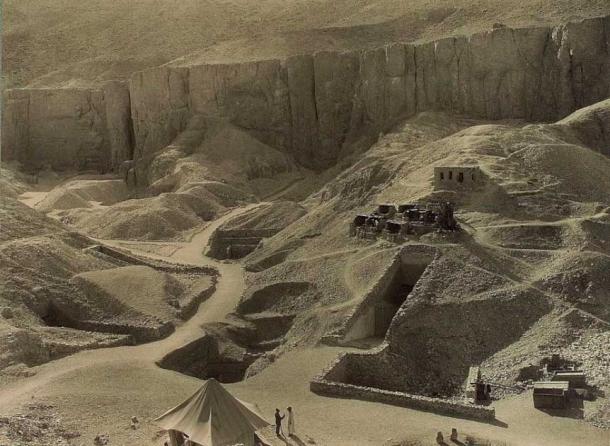
The Valley of the Kings where Tutankhamun’s tomb was uncovered. Several tombs in the Valley of the Kings lay open continuously from ancient times onward, but the entrances to many others had remained hidden until the 19th century (Public Domain)
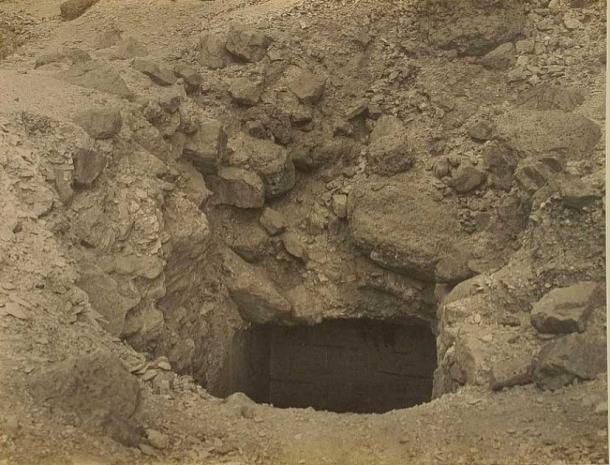
The entrance to Tutankhamun’s tomb found beneath piles of debris. (Public Domain)
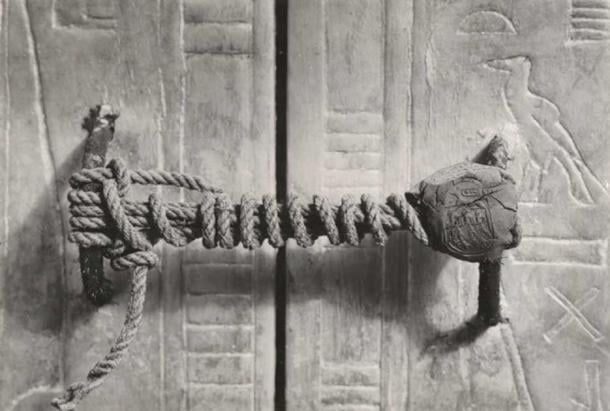
Harry Burton's photograph records the intact necropolis seal and cord fastening on the third (of four) great gilded shrines surrounding Tutankhamun's sarcophagus in the Burial chamber. The unbroken seal confirmed that the King's body remained undisturbed, despite the tomb having been broken into and robbed several times in antiquity (Public Domain).
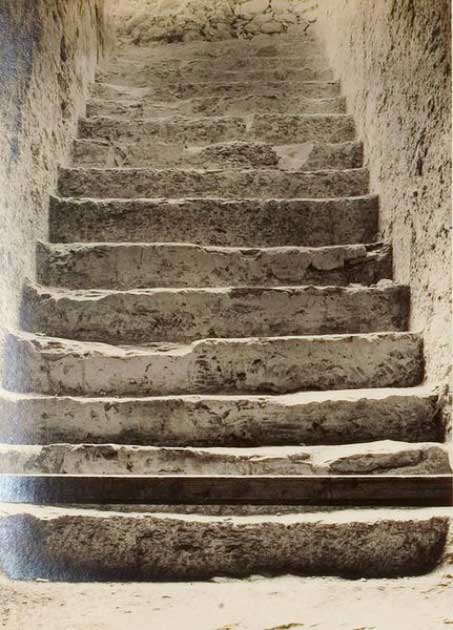
This photograph was taken on the spot where the sealed entrance doorway was uncovered on 5th November 1922. Harry Burton's camera lens looks up the sixteen-step staircase, towards the top step found on 4th November. (Public Domain)
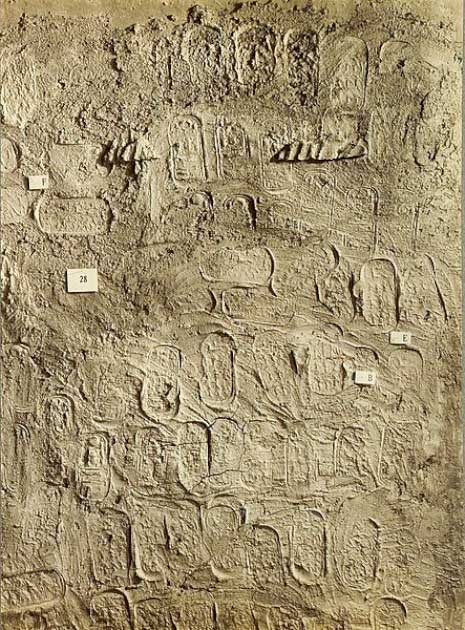
A section from the blocking sealing the tomb's outer doorway, its mud-plastered surface bears stamped impressions of the official necropolis seals and Tutankhamun's cartouche. (Public Domain)
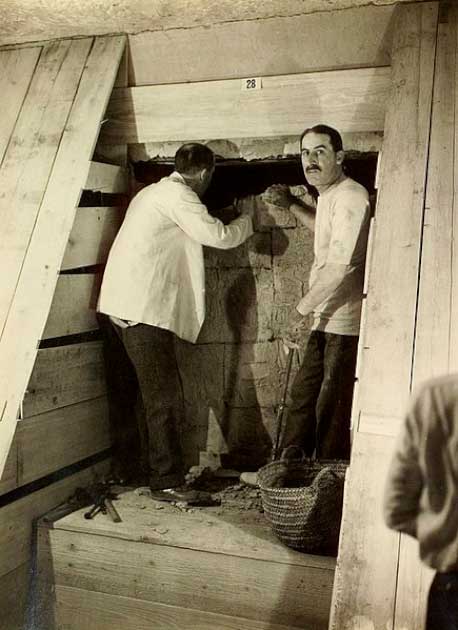
One of only two images showing Howard Carter (on the left) and Lord Carnarvon together in the tomb. They are beginning the process of dismantling the wall between the Antechamber and the Burial Chamber. (Public Domain)

Howard Carter and Lord Carnarvon stand in the partially dismantled doorway between the Antechamber and the Burial Chamber. Lord Carnarvon died less than two months after this photograph was taken. (Public Domain)
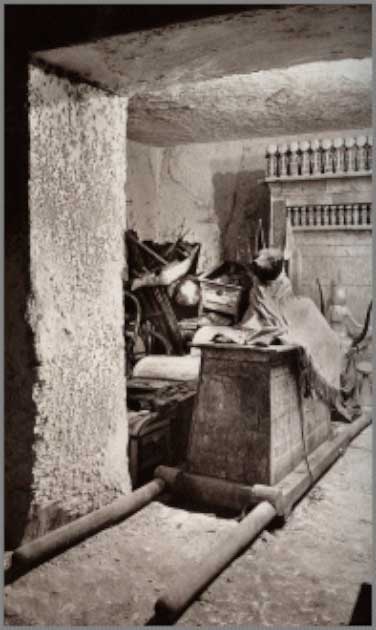
The Anubis shrine on the threshold of the Treasury viewed from the Burial Chamber. The figure of Anubis was covered with a linen shirt inscribed with the cartouche of Akhenaten. (Public Domain)
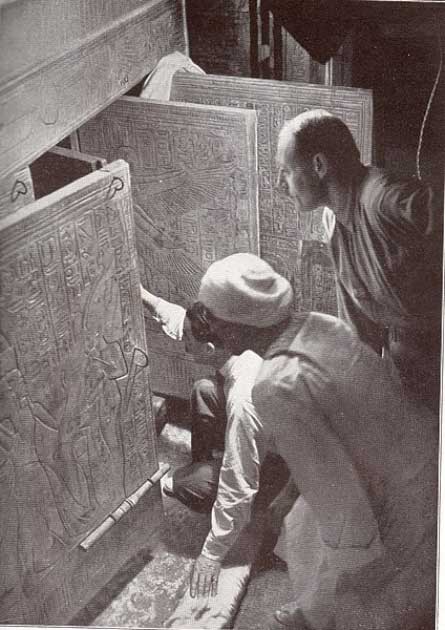
Howard Carter (kneeling), Arthur Callender and an Egyptian workman in the Burial Chamber, looking through the open doors of the four gilded shrines towards the quartzite sarcophagus of Tutankhamun (Public Domain)
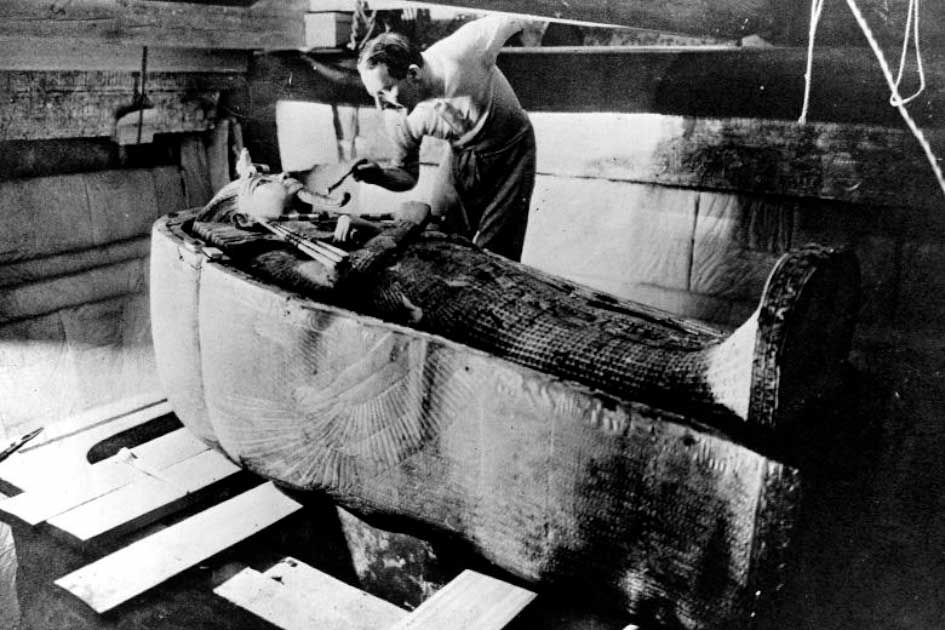
Howard Carter working on the lid of the second (middle) coffin, still nestled within the case of the first (outermost) coffin in the Burial Chamber of Tutankhamun. (Public Domain)
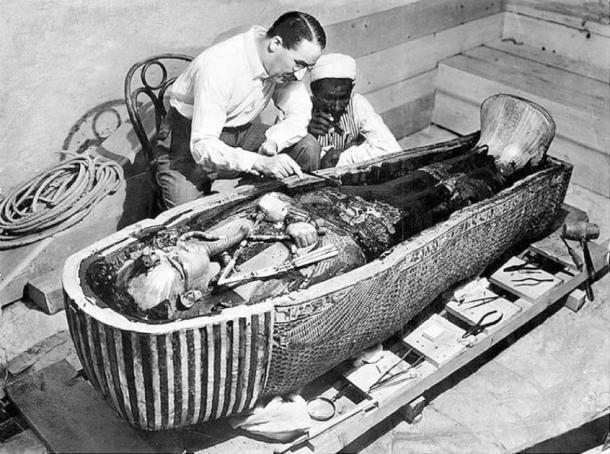
Howard Carter and an Egyptian workman examine the third (innermost) coffin of Tutankhamun made of solid gold, inside the case of the second coffin. (Public Domain)
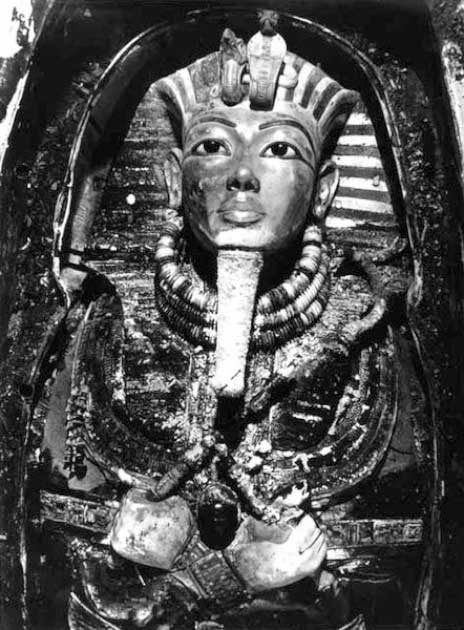
The gold mask of Tutankhamun in situ on the mummy of the King, still inside the third (innermost) solid gold coffin. (Public Domain)
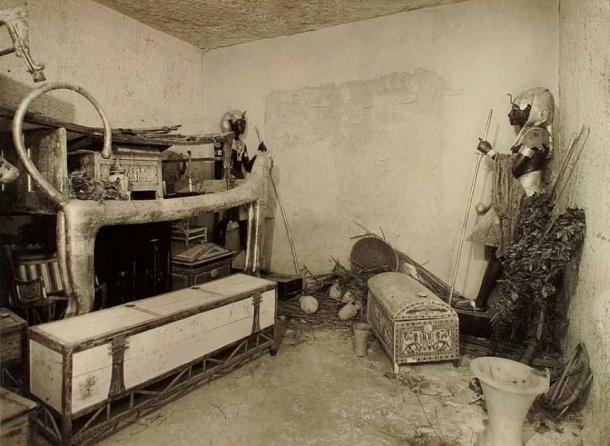
Tutankhamun’s tomb. View of the northern wall of the Antechamber showing the sentinel statues guarding the sealed doorway leading to the King’s Burial Chamber. (Public Domain)
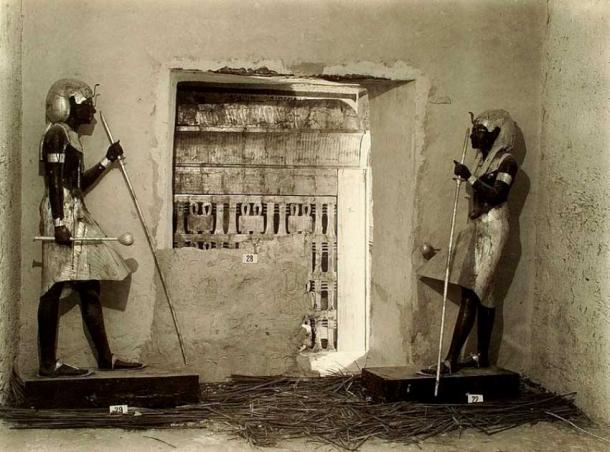
The sentinel statues guarding the doorway leading to the King’s Burial Chamber, which has now been opened. (Public Domain)
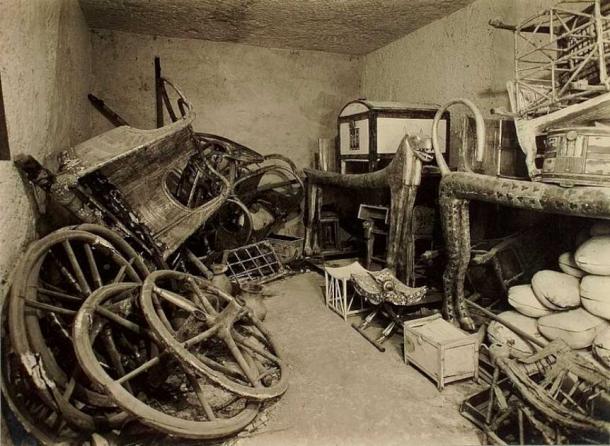
Tutankhamun’s Tomb. Disassembled chariots and cow-headed couches at the southern end of the Antechamber. (Public Domain)
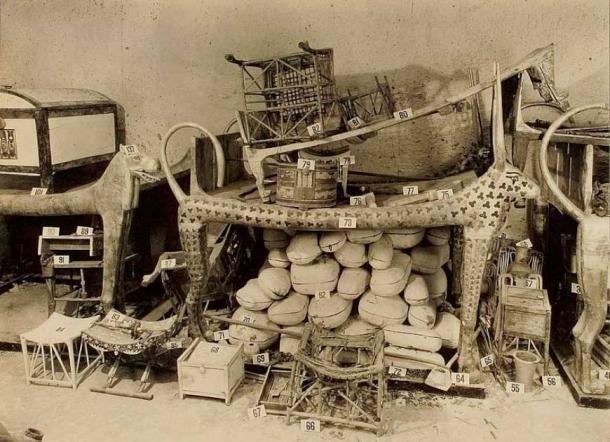
Cow-headed couch in the Antechamber of Tutankhamun’s tomb with many objects stacked on top. The packages underneath contained joints of meat. (Public Domain)
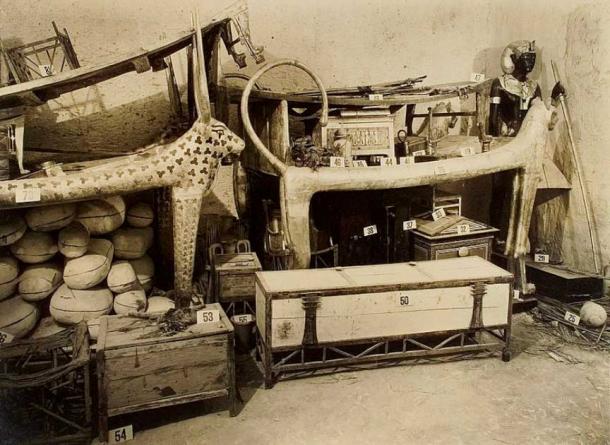
Tutankhamun’s tomb. White box in front of the lion couch in the Antechamber, contained, amongst other items, linen garments (shirts, shawls and loin cloths), 18 sticks, 69 arrows and a trumpet (Public Domain)
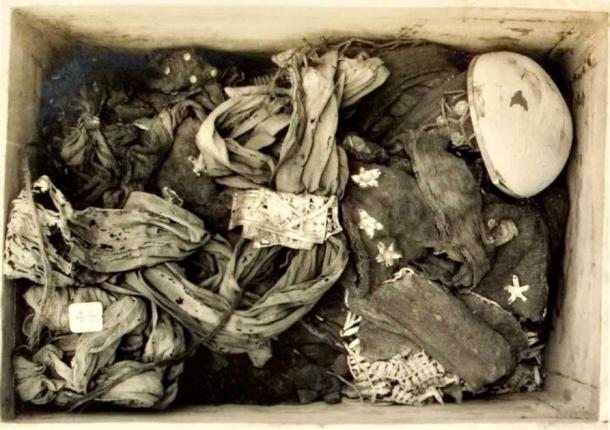
The contents of one of the storage trunks in Tutankhamun’s tombs, containing linen garments and loin cloths. (Public Domain)
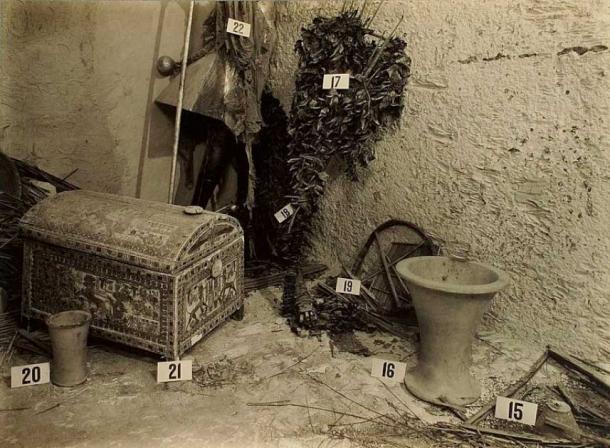
An ornate trunk and other objects found in Tutankhamun’s tomb. The items were numbered as part of the cataloguing process. It took 10 years to complete the cataloguing of the more than 5,000 artifacts found in the tomb. (Public Domain)
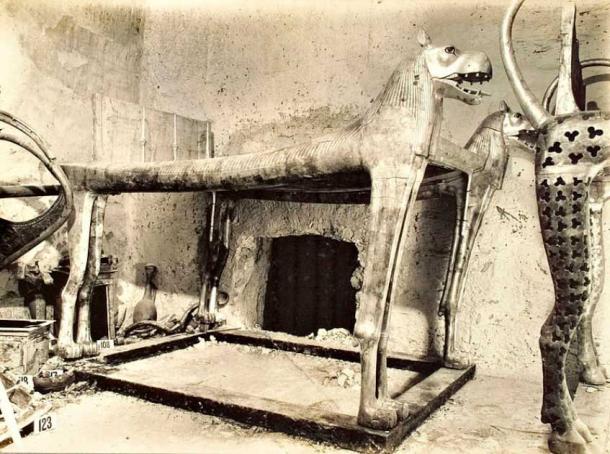
Lion couch in the Antechamber of Tutankhamun’s tomb. (Public Domain)
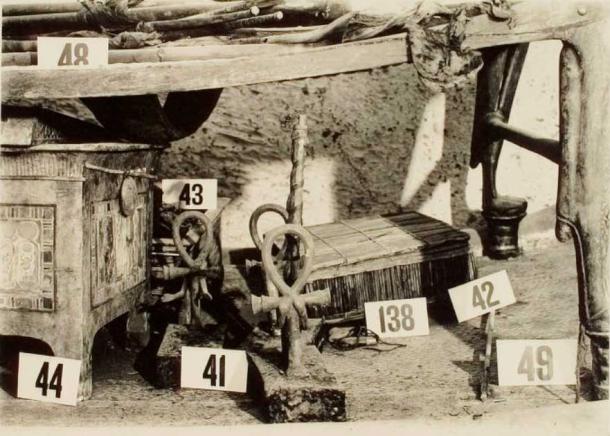
Tomb treasures including a number of Egyptian Ankh statues. (Public Domain)
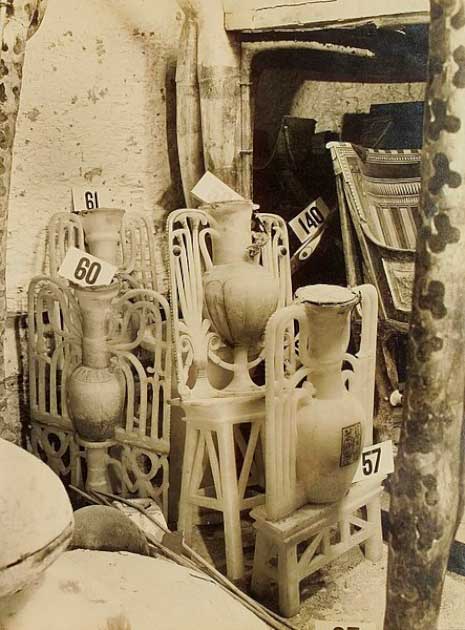
Sealed alabaster 'unguent' vases between the cow-headed and lion couches against the west wall of the Antechamber. (Public Domain)
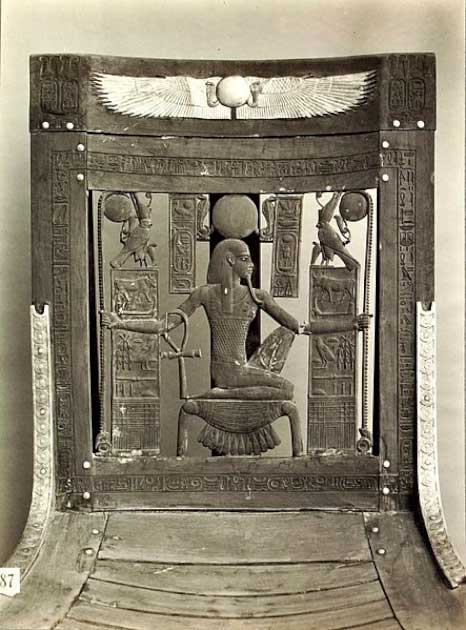
An ornately decorated chair/throne photographed by Burton in Tutankhamun’s tomb. (Public Domain)
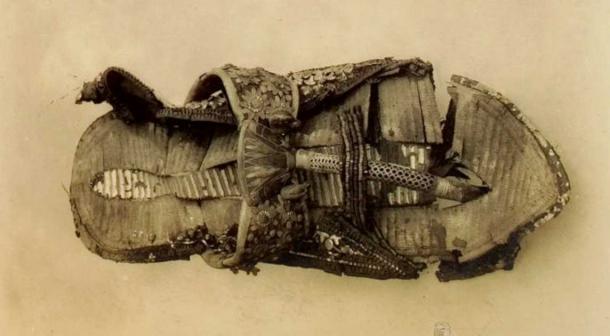
One of Tutankhamun’s sandals photographed within the tomb. (Public Domain)
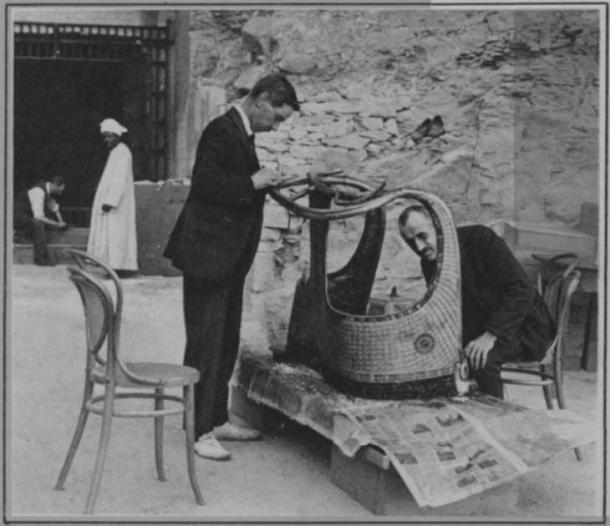
Arthur Mace and Alfred Lucas, conserve a chariot from Tutankhamun’s tomb outside the 'laboratory' in the neighboring tomb of Seti II, December 1923. Published in 1928 as part of Mace's obituary.
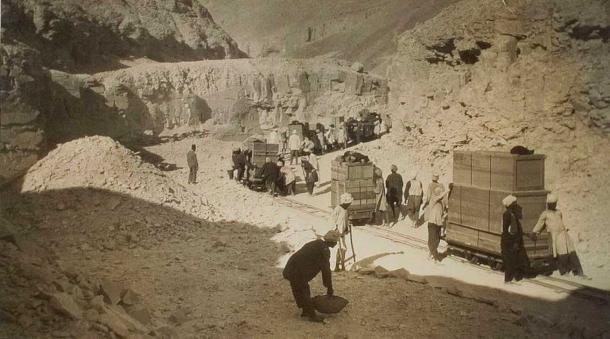
Tomb treasures were packed in wooden crates and transported from the tomb to the banks of the Nile for transportation to Cairo by boat. (Public Domain)
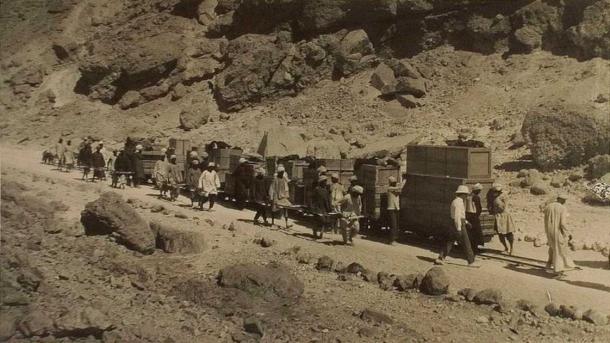
The transportation of tomb treasures by Egyptian workmen. (Public Domain)
Top image: Left: The corridor leading to the Antechamber of Tutankhamun’s tomb. Right: The moment Tutankhamun’s shrine was opened revealing his sarcophagus. (Public Domain).
By Joanna Gillan
















Comments
Thanks for sharing these. Fortunate enough to see the items in the Cairo Museum, Valley of the Kings, and in Denver CO.
Saw King Tut's exhibition of these treasures in Denver. Most of these items were there. Absolutely awe- inspiring.
The biggest lie or diversion might be that this was an ‘elite tomb’, and not the subterranean dwellings of common people of the day, before the place was hit and destroyed. Which photos above don’t look like they were STAGED? Makes you wonder what may lie below the Richat Structure (Atlantis). When they do finally dig under the Richat Structure, let’s demand it be live-streamed!
Nobody gets paid to tell the truth.
We should be grateful of Howard Carter's work, not only the discovery but also the cataloguing of the 5000+ items. The photographer's work is laudable, considering the rather primitive equipment he had to work with.
I’m still in awe of the magnicent items discovered in this extraordinary tomb. This is still one of the most renowned and important finds in the history of archaeology. To see their level of creativity and workmanship is truly humbling. We’re right to be so interested in ancient Egypt. Their civilization gives us new insights with every discovery.